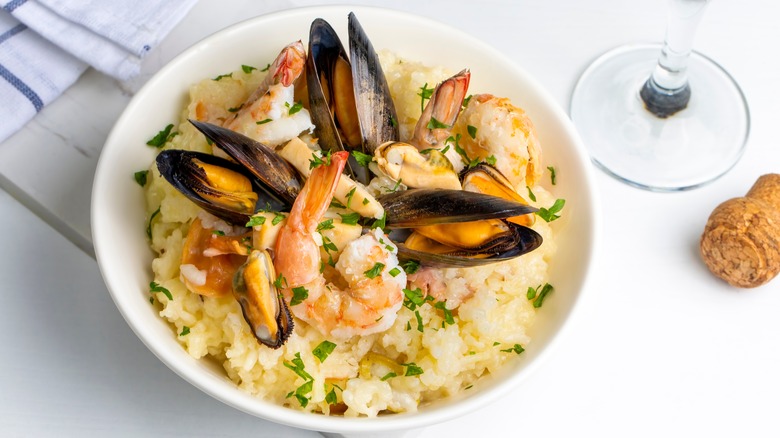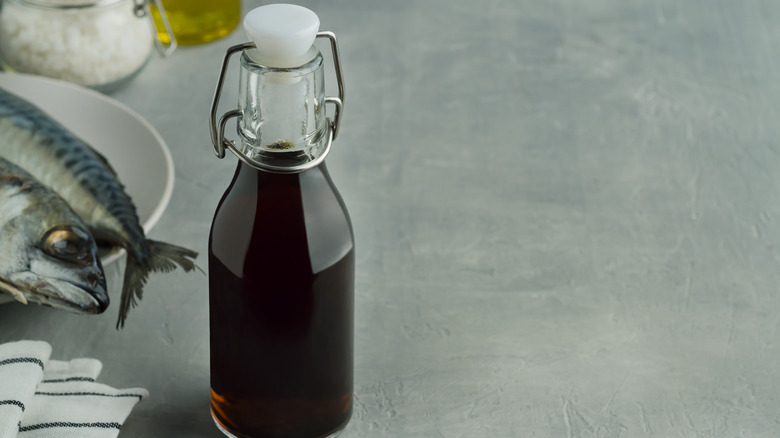Fish Sauce Is Your Missing Ingredient For The Best Seafood Risotto
Whether you're topping your seafood risotto with clams, chopped shrimp, lump crabmeat, or lobster, you might be missing out on a key ingredient that elevates your risotto. Perhaps you're accustomed to creating a seafood risotto using a regular water-based cooking liquid, or you've ventured into using seafood broth, or mixing in clam juice to enhance the salty ocean taste. However, if you head to the Asian spice and sauce aisle, you'll find an ingredient that can deliver all the briny seafood flavor while also adding delectable umami: fish sauce.
Fish sauce is a common pantry staple you've likely encountered in Thai, Indonesian, or Vietnamese cuisine. It's incredibly versatile, adding salt, umami, and a hint of fishiness to a variety of dishes in just a few potent drops. You might not consider adding it to a traditional Italian dish like risotto, but when making seafood risotto, a dash of fish sauce can give your meal dimension and added richness.
All about fish sauce
If you're unfamiliar with fish sauce, it may sound off-putting to start working with such a strong, pungent sauce in the kitchen. However, the magic of this liquid condiment is that less is more. Fish sauce is made from various fish like anchovies, shrimp, and/or mackerel, packing them with a lot of oil and salt. The salt eventually ferments the fish, creating the delicious, aromatic brown liquid. This fermentation process can take up to two years to produce a high-protein, quality fish sauce.
Fish sauce also naturally contains the amino acid glutamate, which is released as the fish undergo the fermentation process. Glutamate enhances flavor in food, similar to sodium. However, using ingredients with glutamate allows for less use of table salt during cooking. This glutamate is part of what makes fish sauce so special and why it can add a unique, savory-salty twist to your seafood risotto.
How to cook your seafood risotto with fish sauce
You can make risotto like a pro at home. First, ensure you begin with the right rice: a short-grain variety with a high amount of starch, like arborio rice, is the perfect base. Gradually warm your cooking liquid, whether you choose to use standard seafood broth or combine clam broth with water. Saute your aromatics and rice, then add your hot cooking liquid gradually. But where does the fish sauce come in?
Since fish sauce is a strong, salty condiment, the best way to start cooking with it is to sparingly add it to your seafood risotto. Begin with just a drop or two, and add more as needed as you taste-test along the way. You could add a few drops to the cooking liquid itself, incorporating the fish sauce into every layer of the risotto. But if you're more on the fence, adding the drops of fish sauce towards the end is a good start. No matter your choice of seafood, your risotto will reach another level with a blast of umami from just a bit of fish sauce.


